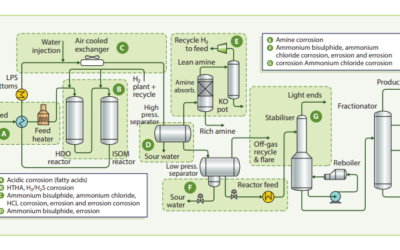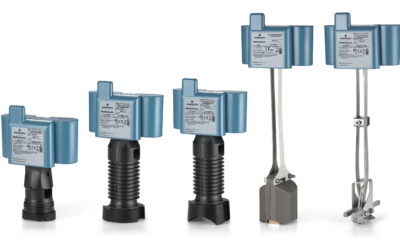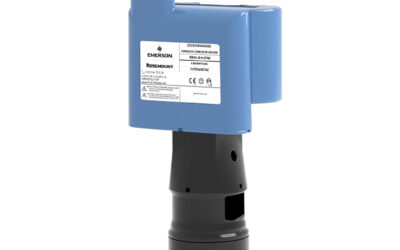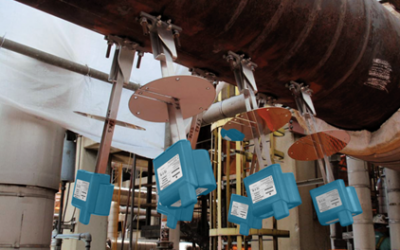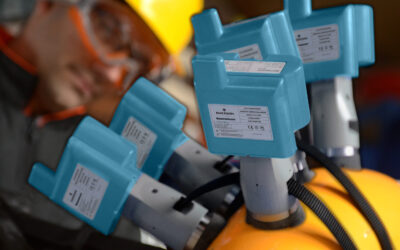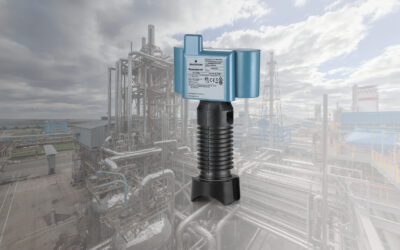In a Decarbonisation Technology article, Managing corrosion risk in SAF and renewable diesel processes, Emerson’s William Fazackerley describes how non-intrusive real-time corrosion monitoring provides early warning of corrosion issues to enable early mitigation actions.

Posts by or with William Fazackerley
Advancing Non-Intrusive Corrosion Measurement in Modern Refinery Operations
As refineries navigate an increasingly complex operating environment, the challenge of managing corrosion risks while maintaining operational flexibility has become paramount. Emerson's Rosemount™ Wireless Corrosion and Erosion Transmitters, with over a decade of...
Navigating Corrosion Hotspots in Amine Units: A Guide for Refineries and Gas Processing Plants
Amine units are critical components in refineries and gas processing plants, removing acidic contaminants like H2S and CO2 from process streams. However, these units are particularly vulnerable to corrosion, which can lead to costly shutdowns and safety risks. Let's...
How to Monitor the Effects of Sand Erosion at Oil and Gas Production Sites
When it’s time to repaint the ironwork of a bridge or building, what’s the best way to strip away old paint and rust? Sandblasting is usually the first choice because it is very effective at eroding surface crud and getting down to clean metal, but if it continues too...
Managing Equipment Damage Caused by Corrosive Feedstocks Encountered with Biofuel Production (Part 2)
When we talk about renewable fuels to the general public, many might imagine cars running on gasoline made from wildflowers and meadow grass. However, those who work in the industry recognize that the fats and oils used to make renewable diesel can be just about...
Managing Equipment Damage Caused by Corrosive Feedstocks Encountered with Biofuel Production
When we talk about renewable fuels to the general public, many might imagine cars running on gasoline made from wildflowers and meadow grass. Those who work in the industry recognize that the fats and oils used to make renewable diesel can just about be anything but...
Solving Corrosion Problems by Treating Metal Deterioration as a Process Variable
Imagine that you’re called into your plant to solve a recurring problem. The operator states: “We’ve had to replace this valve three times this year due to failures from over pressure.” Your first question is pretty obvious: “How high is the pressure?” The operator...
5 Key Factors to Consider Before Investing in a Corrosion Monitoring Solution
Introduction If you are reading this, then it’s likely that you are considering investing in an ultrasonic thickness corrosion monitoring solution to improve visibility into the health of your facility. Now that you’ve decided there is a compelling reason to install...
Optimise Plant Performance in Chemical Facilities Using Continuous Integrity Monitoring
Continuous corrosion monitoring offers the granularity, accuracy, and reproducibility that traditional periodic monitoring methods such as manual inspection do not. Using these traditional methods mean it is impossible to link corrosion incidents to asset integrity, which leads to chemical operators acting reactively rather than proactively.
Managing Localised Corrosion Using Online Wall Thickness Monitoring
Wireless non-intrusive corrosion monitoring technology can reliably be used to detect localised metal loss, which offers early detection of corrosion or erosion events as well as validation that mitigation strategies are adequately controlling corrosion and erosion.
Managing Unknown Corrosion in Carbon Capture and Storage Facilities
Carbon capture and storage (CCS) or utilization (CCU) of captured carbon dioxide (CO2) are tools for reducing global carbon emissions, but with new technologies come new challenges. Learn about potential risks with CCS and CCU, and how they could be mitigated using modern sensor technology.
The Benefits of Continuous Corrosion Monitoring Over Periodic Manual Inspection
As a complimentary technique to manual inspection methods, wireless corrosion monitoring can greatly enhance visibility into plant and asset health while also keeping personnel out of hazardous areas. In order to drive a plant to its maximum capability, operators must continuously monitor its corrosion risk in real time.
Our Global Community
Emerson Exchange 365
The opinions expressed here are the personal opinions of the authors. Content published here is not read or approved by Emerson before it is posted and does not necessarily represent the views and opinions of Emerson.
